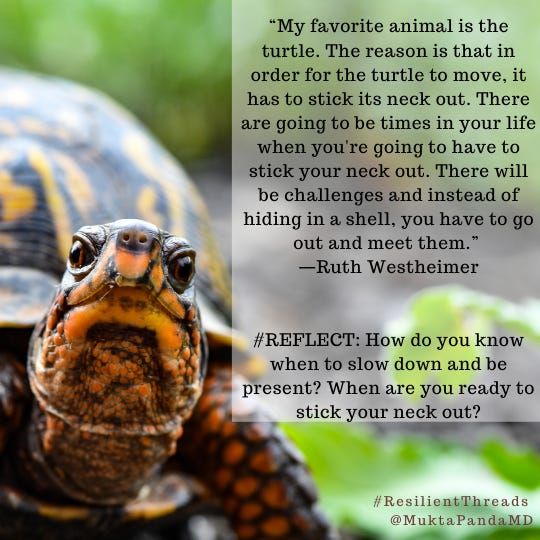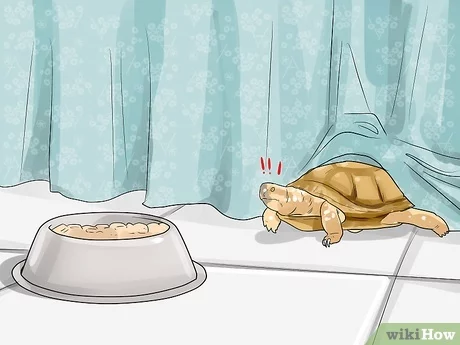To get a turtle to come out of hiding, create a quiet and safe environment with minimal disturbances. Place some food near its hiding spot to entice it out.
Turtles are naturally cautious creatures, so patience is key in gaining their trust. Additionally, avoid sudden movements or loud noises that could startle the turtle further into hiding. By providing a calm and inviting space, the turtle will feel more comfortable and may gradually emerge from its hiding place.
Remember to respect the turtle’s space and boundaries as you try to coax it out into the open.

Credit: www.alamy.com
Understanding Turtle Behavior
Natural Instincts
Turtles have natural instincts that drive their behavior.
They are known to be shy and cautious animals.
Understanding their instincts is crucial in encouraging them to come out of hiding.
Hiding Triggers
Various factors can act as hiding triggers for turtles.
These triggers include loud noises, sudden movements, or feeling threatened.
Identifying and minimizing these triggers can help create a safe and comfortable environment for the turtle.
Creating A Safe Environment
Encouraging a turtle to come out of hiding involves creating a safe environment with ample hiding spots. Provide a quiet space with hiding places like logs and plants, ensuring privacy and security for the turtle. Patience and a stress-free atmosphere are key to coaxing the turtle out of hiding.
Optimal Habitat Setup
Creating an ideal habitat for your turtle is key to helping them feel secure and at ease. Here are some essential elements to consider for their habitat setup:- Provide a spacious tank or enclosure that allows for ample movement and exploration.
- Include a basking area with a heat lamp and UVB light to mimic their natural environment.
- Ensure the tank is equipped with a water source large enough for swimming and soaking, as well as a dry area for basking.
- Use natural substrate such as sand or soil to replicate their natural habitat and allow for digging and burrowing.
Minimizing Stress Factors
Reducing stressors in the turtle’s environment is crucial for encouraging them to come out of hiding. Here are some ways to minimize stress factors:- Keep the tank in a quiet area away from excessive noise and activity.
- Avoid sudden movements or loud sounds that may startle the turtle.
- Maintain stable water and air temperatures within the tank to prevent fluctuations that could stress the turtle.
- Provide hiding spots and vegetation to create a sense of security and privacy within the habitat.
Building Trust With Your Turtle
To build trust with your turtle and get it to come out of hiding, create a safe and comfortable environment in its habitat. Avoid sudden movements and loud noises, and offer treats and gentle interaction to encourage the turtle to feel secure and come out of its shell.
Turtles are known to be shy creatures that hide away in their shells when they feel threatened or uncomfortable. So, if you want your turtle to come out of hiding, you need to build trust with it. Building trust with your turtle takes time, patience, and consistency.Consistent Interaction
One of the best ways to build trust with your turtle is through consistent interaction. Spend time with your turtle every day, talking to it and offering it treats. Over time, your turtle will come to associate you with positive experiences, and it will be more likely to come out of hiding when you’re around.Feeding Routine
Another way to build trust with your turtle is by establishing a feeding routine. Turtles love food, and if you consistently offer them food at the same time every day, they will start to anticipate your presence. Eventually, your turtle will come to associate you with food, which will help to build trust and encourage it to come out of hiding.Conclusion
Building trust with your turtle takes time, patience, and consistency. By interacting with your turtle every day and establishing a feeding routine, you can help your turtle feel more comfortable and secure in its environment. Over time, your turtle will come out of hiding more frequently, and you’ll be able to enjoy its company to the fullest.
Credit: muktapandamd.substack.com
Encouraging Exploration
Adding Enrichment
One way to encourage a turtle to come out of hiding is to add enrichment to its environment. This can include providing a variety of objects for the turtle to interact with, such as rocks, plants, and logs. By adding different textures and materials, you can stimulate the turtle’s curiosity and encourage it to explore its surroundings.
Creating Hideouts
Another effective method for encouraging a turtle to come out of hiding is to create hideouts within its habitat. By providing secure and comfortable hiding spots, such as caves or hollow logs, you can give the turtle a sense of security, which can help it feel more comfortable venturing out into the open.
Utilizing Natural Light Cycles
Daylight Exposure
Turtles are ectothermic creatures, meaning they rely on external sources of heat to regulate their body temperature. Exposing your turtle to natural daylight is crucial for maintaining its circadian rhythm and encouraging it to come out of hiding. Place the turtle’s enclosure in a well-lit area where it can receive direct sunlight for at least a few hours each day.
Nighttime Darkness
Turtles also require periods of darkness to simulate their natural environment. Ensuring that the turtle’s enclosure is sheltered from artificial light sources during the night is essential for mimicking the natural light cycles they experience in the wild. Cover the tank with a dark cloth or use a timer to turn off any ambient lighting in the room during the night.
Avoiding Sudden Movements
To coax a turtle out of hiding, move slowly and avoid sudden movements to avoid scaring it away. Speak softly and offer enticing food to encourage the turtle to come out of its shell. Be patient and gentle in your approach to build trust with the cautious reptile.
Turtles are shy creatures that tend to hide away at the slightest hint of danger. If you’re trying to get your pet turtle to come out of hiding, it’s important to approach slowly and avoid sudden movements. Sudden movements can startle the turtle, causing it to retreat further into its shell or hideaway spot. In this post, we’ll explore the best ways to approach a turtle, handle it gently, and coax it out of hiding without causing any harm.Approaching Slowly
When approaching a turtle, it’s essential to move slowly and calmly. If you rush towards the turtle, it will become scared and retreat further into its hiding place. Instead, take small, slow steps towards the turtle, and avoid any sudden movements. Try to approach the turtle from the side, rather than from the front, as this is less threatening. Remember to keep your movements smooth and gentle.Gentle Handling
Once you’ve approached the turtle, it’s essential to handle it gently. Turtles are delicate creatures, and rough handling can cause them stress and harm. When picking up a turtle, always support its entire body with both hands. Avoid picking up the turtle by its legs or tail, as this can cause serious injuries. Hold the turtle close to your body to provide a sense of security. If the turtle seems frightened or stressed, put it back down and try again later.Coaxing The Turtle Out Of Hiding
If your turtle has retreated into its shell or hiding spot, it’s important to coax it out gently. Avoid trying to pry the turtle out with force, as this can cause it harm. Instead, try placing a favorite food or treat near the turtle’s hiding spot. You can also try creating a warm and inviting environment by adding a heat lamp or creating a cozy hiding spot. Be patient and give the turtle time to come out on its own terms.Conclusion
By approaching slowly, handling gently, and coaxing the turtle out of hiding with patience, you can help your pet feel safe and secure. Remember to avoid sudden movements, rough handling, and prying the turtle out of its hiding spot with force. With a little patience and care, you’ll be able to enjoy your pet turtle’s company and watch it thrive in its new environment.Seeking Professional Advice
When it comes to getting a turtle to come out of hiding, seeking professional advice can be a crucial step in ensuring the well-being of your pet. Consulting with a veterinarian or contacting a reptile expert can provide valuable insights and guidance on how to approach the situation.
Consulting A Veterinarian
If your turtle is consistently hiding and showing signs of distress, consulting a veterinarian specializing in reptiles is essential. A vet can perform a thorough examination to determine if there are any underlying health issues causing the behavior and recommend appropriate treatment.
Contacting A Reptile Expert
Reptile experts possess in-depth knowledge and experience working with turtles. They can offer valuable advice on creating an environment that encourages the turtle to come out of hiding, as well as behavioral techniques to help alleviate stress and anxiety.

Credit: www.istockphoto.com
Monitoring Behavioral Changes
- Turtling into shell for extended periods
- Refusal to eat or drink
- Unusual lethargy or lack of movement
Seeking Veterinary Help
If your turtle displays persistent distress signals, consult a veterinarian promptly.
Conclusion
Understanding a turtle’s natural behavior and providing a comfortable environment is crucial in encouraging them to come out of hiding. By maintaining proper lighting, temperature, and offering a variety of hiding spots, you can create an ideal habitat for your pet turtle.
Patience and consistency are key in gaining their trust and coaxing them out of their shell. Remember to respect their natural instincts and allow them to come out on their own terms. With these tips, you can create a safe and inviting space for your turtle to thrive.






Leave a Reply